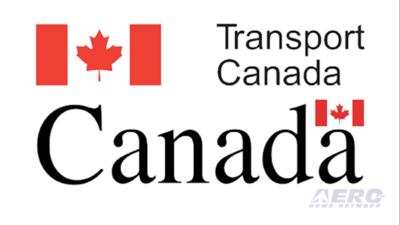Sat, Nov 28, 2020
The Government of Canada Has 'Modernized And Strengthened' ELT Regulations
The Minister of Transport has announced changes to the Canadian Aviation Regulations to mandate the use of digital emergency locator transmitters (ELTs) onboard aircraft flying in Canada.

The new, strengthened requirements will:
- improve passenger safety by increasing the likelihood that the distress signals will be received;
- enhance the efficiency of search and rescue operations by providing rapid, reliable and accurate position information to search and rescue services;
- reduce false alarms and the unnecessary deployment of search and rescue resources;
- harmonize emergency locator transmitter requirements with international standards; and,
- respond to a recommendation from the Transportation Safety Board of Canada, which called for the installation of digital emergency locator transmitters on all Canadian-registered aircraft and foreign aircraft operating in Canada.
Under the previous regulations, Canadian aircraft were required to be equipped with an analog ELT using the 121.5 MHz frequency. The regulatory changes announced today will require all Canadian aircraft to be equipped with a digital ELT capable of broadcasting simultaneously on frequencies of 406 MHz and 121.5 MHz, with some exceptions.
The MoT claims that using digital ELTs will reduce risk to human life and health as these devices provide more rapid, reliable and accurate position information to help search and rescue services identify and locate an aircraft in distress in a timely manner. Distress signals are received by a global satellite system that is monitored by search and rescue services, thereby increasing the chances of a successful rescue in the event of a downed aircraft.
The amendments apply to Canadian and foreign-registered aircraft operated in Canada, with the exception of gliders, balloons, airships, ultra-light aeroplanes and gyroplanes.
Commercial air operators, foreign aircraft and private operators have one year after the final publication of the amended regulations in Canada Gazette, Part II on November 25, 2020, to implement the amendments while recreational operators have five years to comply.
More News
A Puff Of Smoke Came Out From The Top Of The Engine Cowling Followed By A Total Loss Of Engine Power On May 9, 2025, about 1020 mountain daylight time, an experimental amateur-buil>[...]
From 2022 (YouTube Edition): Jenny, I’ve Got Your Number... Among the magnificent antique aircraft on display at EAA’s AirVenture 2022 was a 1918 Curtiss Jenny painstak>[...]
Very High Frequency (VHF) The frequency band between 30 and 300 MHz. Portions of this band, 108 to 118 MHz, are used for certain NAVAIDs; 118 to 136 MHz are used for civil air/grou>[...]
“From approximately November 2021 through January 2022, Britton-Harr, acting on behalf of AeroVanti, entered into lease-purchase agreements for five Piaggio-manufactured airc>[...]
Microburst A small downburst with outbursts of damaging winds extending 2.5 miles or less. In spite of its small horizontal scale, an intense microburst could induce wind speeds as>[...]
 NTSB Prelim: Lee Aviation LLC JA30 SuperStol
NTSB Prelim: Lee Aviation LLC JA30 SuperStol Classic Aero-TV: Curtiss Jenny Build Wows AirVenture Crowds
Classic Aero-TV: Curtiss Jenny Build Wows AirVenture Crowds ANN's Daily Aero-Term (05.30.25): Very High Frequency (VHF)
ANN's Daily Aero-Term (05.30.25): Very High Frequency (VHF) Aero-News: Quote of the Day (05.30.25)
Aero-News: Quote of the Day (05.30.25) ANN's Daily Aero-Term (05.31.25): Microburst
ANN's Daily Aero-Term (05.31.25): Microburst



